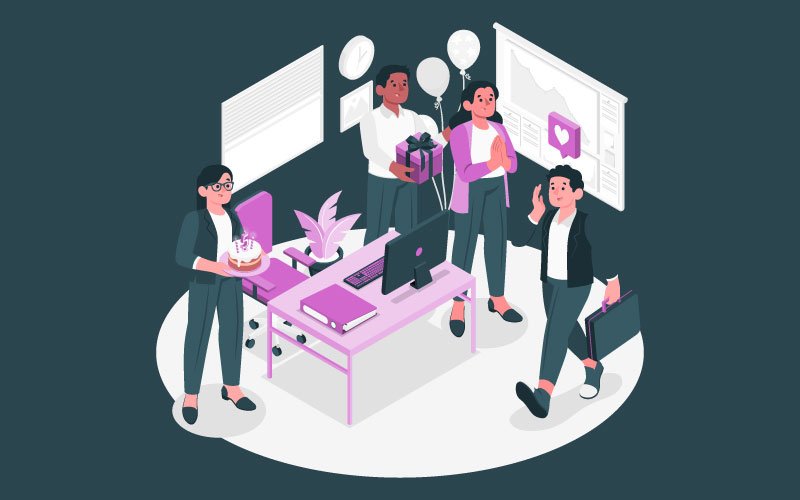As a mid-career professional, you’ve likely mastered the technical skills required for your role. You’ve proven yourself as a reliable executor, someone who gets things done. But as you look toward the next phase of your career—whether it’s a leadership position, greater responsibilities, or a more impactful role—something shifts. The focus is no longer just on what you do but *how you think*. This is where developing a strategic mindset becomes essential.
A strategic mindset is the ability to step back from the daily grind, see the bigger picture, and connect your actions to long-term goals. It is about understanding not just the *what* and *how* of your work but the *why*. Strategic thinkers focus on what truly matters, anticipate future challenges, and make decisions that align with broader objectives. In short, they think beyond the immediate and plan for what’s ahead.
For mid-career professionals, cultivating this skill is a game-changer. It’s what separates those who plateau from those who grow into leadership roles. But what does it mean to think strategically, and how can you develop this crucial competency?
The Essence of a Strategic Mindset
At its core, having a strategic mindset means being able to connect the dots. It’s about seeing how your role fits into the larger goals of your team, your organisation, and even your industry. Strategic thinkers don’t just execute tasks—they consider the broader context, weigh the potential impact of their decisions, and focus on creating long-term value.
However, strategic thinking isn’t limited to just internal operations. It also means looking outward—understanding the industry you operate in, the forces driving it, and how your organisation fits into the competitive landscape. Many mid-career professionals get so caught up in their immediate responsibilities that they fail to invest the time and energy to understand these external dynamics. This inward-looking approach can limit their ability to connect their actions to the bigger picture.
Let’s break this down further. A strategic thinker asks questions like:
– What are the key drivers shaping my industry?
– Who are our competitors, and how do we compare to them?
– What are investors and stakeholders expecting from this sector, and how is our company performing relative to those expectations?
– Where are the gaps, and what can we do to address them?
Thinking strategically requires bridging the gap between internal execution and external awareness. It’s not just about delivering on your immediate responsibilities—it’s about positioning yourself and your organisation for long-term success.
Why a Strategic Mindset Matters for Career Growth
As you progress in your career, expectations change. Early in your professional life, success is often measured by how well you execute tasks. But as you aim for leadership roles, the focus shifts. You’re no longer just responsible for your own performance—you’re expected to contribute to the organisation’s vision, solve complex problems, and guide others.
This is where strategic thinking becomes indispensable. Leaders who can think strategically are better equipped to navigate uncertainty, make informed decisions, and inspire confidence in their teams. They’re the ones who spot opportunities for growth, identify risks before they escalate, and position their organisations for long-term success.
But here’s the catch: many mid-career professionals fail to think beyond their immediate scope of work. They focus on internal processes, meeting deadlines, and delivering results—while neglecting the external factors that influence their industry and organisation. This narrow focus can be a career-limiting move. To grow into leadership roles, you need to demonstrate that you understand the bigger picture. You need to show that you’re not just an executor but a thinker who can connect the dots between the organisation’s internal operations and the external environment.
Building External Awareness: The Missing Piece for Many Professionals
One of the most overlooked aspects of strategic thinking is the need to develop a deep understanding of the external environment. Many mid-career professionals lack this perspective because they’re so focused on internal execution. But to think strategically, you must step out of your comfort zone and invest in building this external awareness.
Start by gaining a thorough understanding of your industry. Every industry operates within a unique ecosystem shaped by specific drivers, challenges, and opportunities. Take time to identify the trends influencing your sector—whether it’s technological innovation, regulatory changes, shifting consumer preferences, or economic factors. For example, how is your industry evolving in response to new technologies like AI or sustainability demands? What are the major risks and disruptions looming on the horizon? The more you understand these dynamics, the better equipped you’ll be to anticipate changes and adapt accordingly.
Next, analyse your company’s position within the competitive landscape. How does your organisation stack up against its competitors? What are its strengths, weaknesses, and unique value propositions? Are there areas where competitors are excelling while your company is falling short? This kind of analysis requires more than just casual observation—it demands a commitment to research, networking, and critical thinking.
Another critical area to consider is investor expectations. If you’re working in a public company or a business with external shareholders, understanding what investors are looking for can provide valuable insight into your organisation’s priorities. What metrics are investors using to evaluate your company’s performance? Are there gaps between your company’s results and the benchmarks set by the market or the industry? And most importantly, what can you do to address those gaps?
Developing this external awareness requires effort. It means reading industry reports, attending conferences, networking with peers, and staying informed about the latest trends and developments. It means asking questions, seeking out diverse perspectives, and constantly challenging yourself to look beyond the status quo. Yes, it takes time and energy, but the payoff is immeasurable. The more you understand your industry, your competitors, and your stakeholders, the more effective you’ll be at connecting the dots and making decisions that drive long-term value.
The Long-Term Impact of Strategic Thinking
When you develop a strategic mindset, you’re not just preparing for the next promotion—you’re setting the foundation for sustained success. Strategic thinkers are better decision-makers, more effective leaders, and more resilient in the face of change. They’re the ones who inspire trust, drive innovation, and create value wherever they go.
For mid-career professionals, the ability to think strategically is the bridge between where you are now and where you want to be. It’s what allows you to rise above the daily grind, focus on what truly matters, and position yourself for leadership and impact.
So, start today. Begin by asking the tough questions: How well do I understand my industry? Do I know where my company stands against its competitors? Am I aware of what stakeholders expect from us, and how we can meet those expectations? If the answers aren’t immediately clear, it’s time to dig deeper. Read, network, reflect, and connect the dots. Strategic thinking isn’t just a skill—it’s a mindset. And once you develop it, the possibilities for growth are endless.











